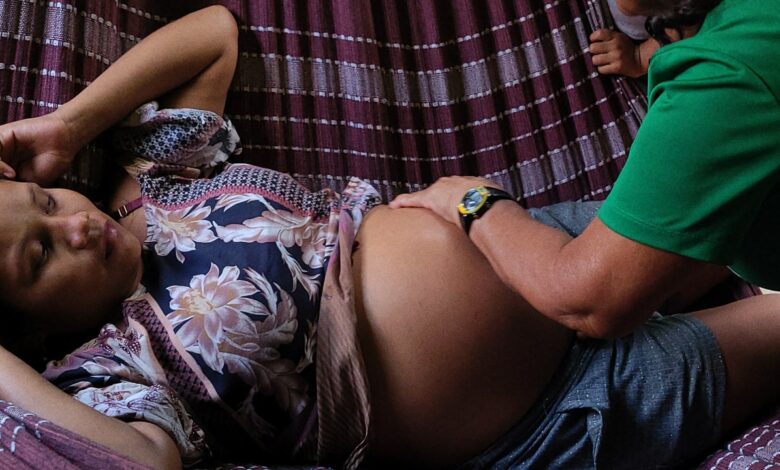Amazonian Midwives Are Bringing the Sacred Back to Birth

In November of 2021, a 60-year-old Indigenous midwife from the Sateré-Mawé ethnicity named Miriam de Alencar Pereira accompanied a pregnant woman to the hospital in Maués, a Brazilian town in the interior of the Amazon. “We arrived at the hospital and the labor had already begun. By the time the doctor arrived, the baby had already started coming out,” says Pereira, who has worked as a midwife for 32 years. “The doctor started pulling at the baby’s neck. I intervened, warning that he could kill the baby.”
The doctor told Pereira she had no authority in the hospital, but the midwife held her ground, and the angry doctor stormed out. The baby was born with the next contraction, just as Pereira had predicted. “We wait for the child to come,” Pereira explains. “When the last strong contraction comes, the mother helps, and the baby is born.” Shortly after, nurses arrived wanting to douche the new mother. Pereira again intervened, maintaining that in all her years assisting births in the Indigenous territories, no woman had ever developed an infection after a natural delivery and that the douche was unnecessary. The doctor never returned, Pereira says, not even to check on the patient before she was released.
In Brazil, childbirth is dominated by a technocratic model (a concept introduced by Dr. Robbie Davis-Floyd to describe the role of technology in birth care), and the mode of delivery often tracks socioeconomic and racial disparities, with almost all women undergoing some form of surgical intervention. If you are white and rich, chances are you will have a “cut above,” which refers to a Cesarean. C-sections make up 90% of births in private hospitals, which amount to about 40% of births in Brazil. According to the WHO, this makes Brazil one of the world’s leaders in C-sections at 55.7% percent, along with the Dominican Republic (58.1%). C-section rates in the U.S., by comparison, hover around 31.7%, and around 26.2% in the U.K. (still above what the WHO recommends, a rate of 15%). If you are Black or brown or poor, you will probably have a “cut below” referring to an episiotomy, a small cut made at the opening of the vagina during delivery, likely in a public hospital, where 60% of births take place. In a remote region of the Amazon, a group of women are working to change those dynamics, with the hopes of changing the way the entire country views and performs birth.
Read More

